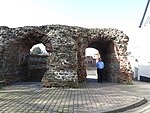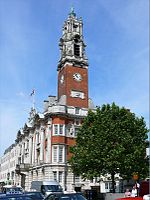Mercury Theatre, Colchester
1972 establishments in EnglandBuildings and structures completed in 1972Buildings and structures in Colchester (town)Theatres in EssexUse British English from April 2015

The Mercury Theatre is a theatre in Colchester, producing highly regarded original work under the title "Mercury Productions" and also receiving touring shows. The theatre has two auditoria, and is led by Tracey Childs (Executive Producer and Joint Chief Executive), Steve Mannix (Executive Director and Joint Chief Executive) and Ryan McBryde (Creative Director). The theatre also contains The Digby Gallery, which showcases local art.
Excerpt from the Wikipedia article Mercury Theatre, Colchester (License: CC BY-SA 3.0, Authors, Images).Mercury Theatre, Colchester
Balkerne Passage, Colchester
Geographical coordinates (GPS) Address External links Nearby Places Show on map
Geographical coordinates (GPS)
| Latitude | Longitude |
|---|---|
| N 51.8894 ° | E 0.8944 ° |
Address
Mercury Theatre
Balkerne Passage Mercury Theatre
CO1 1PT Colchester
England, United Kingdom
Open on Google Maps









